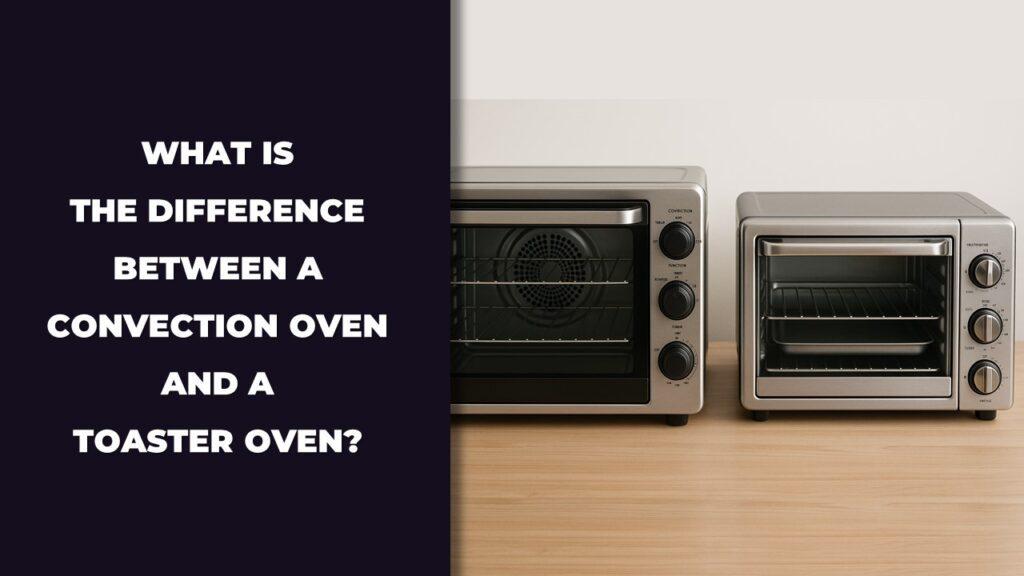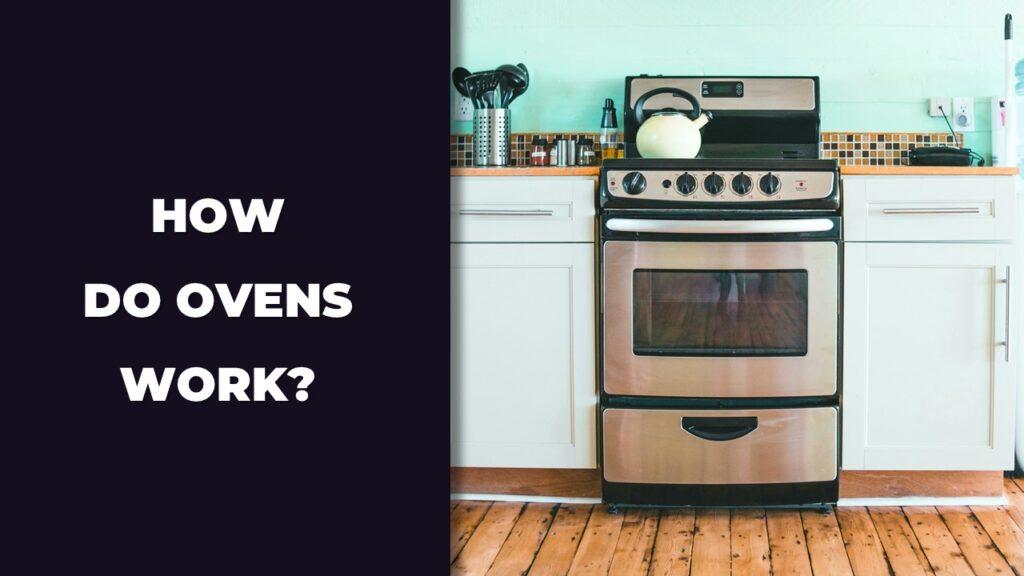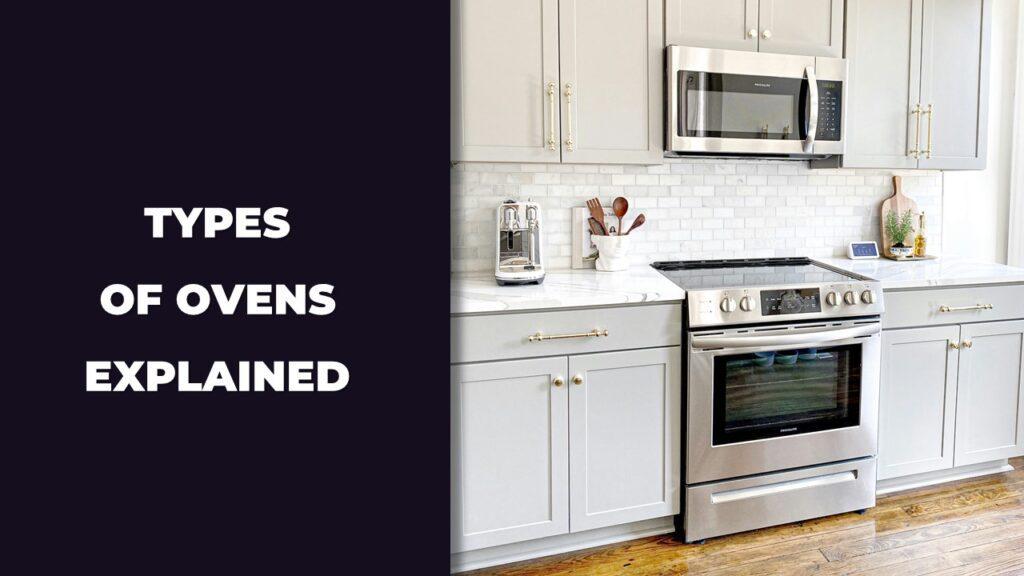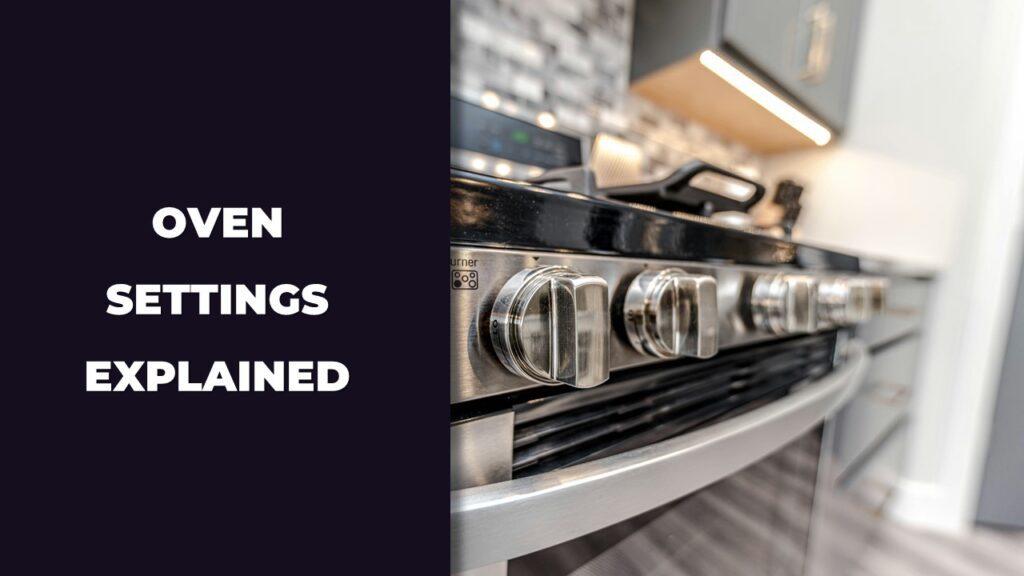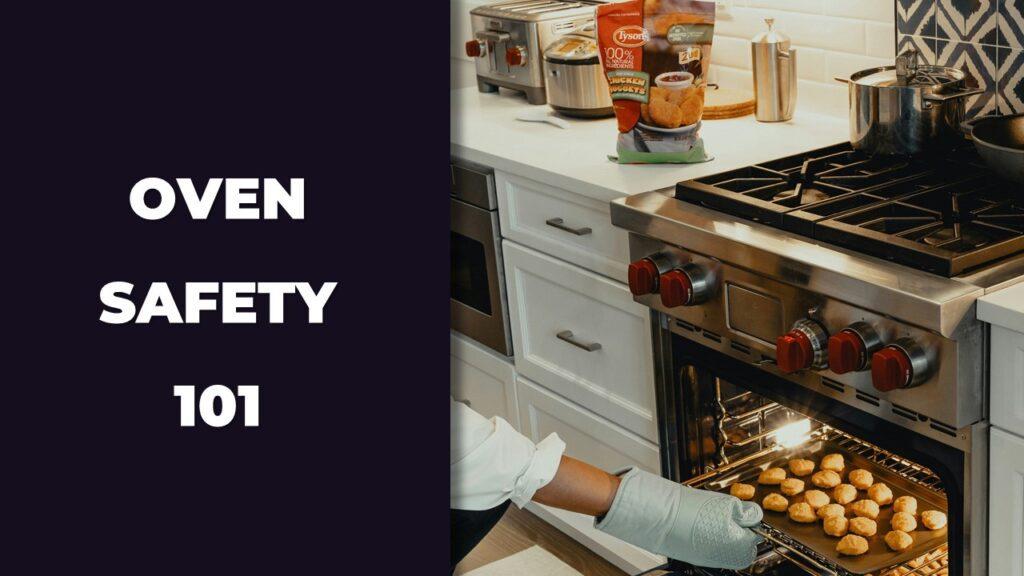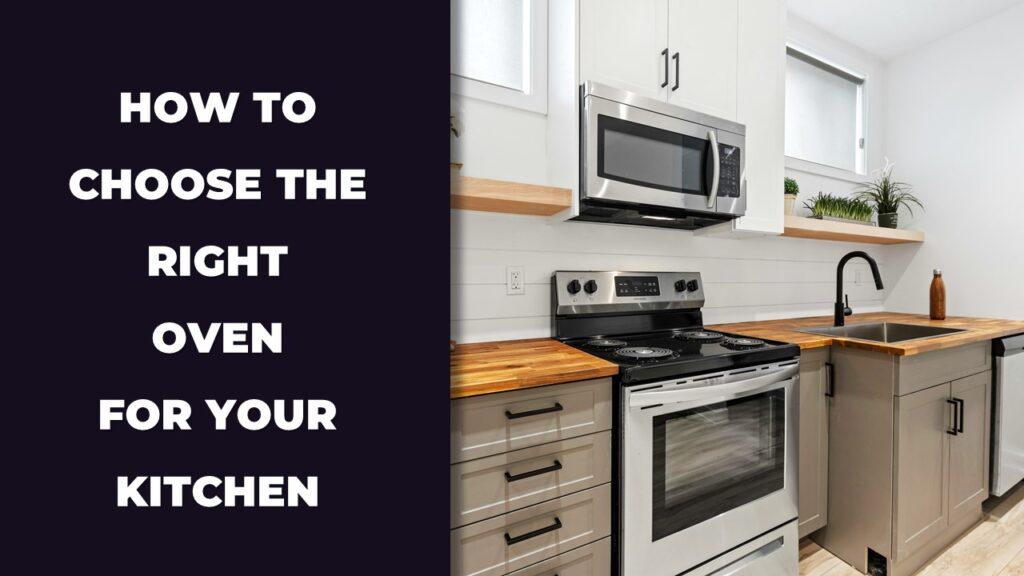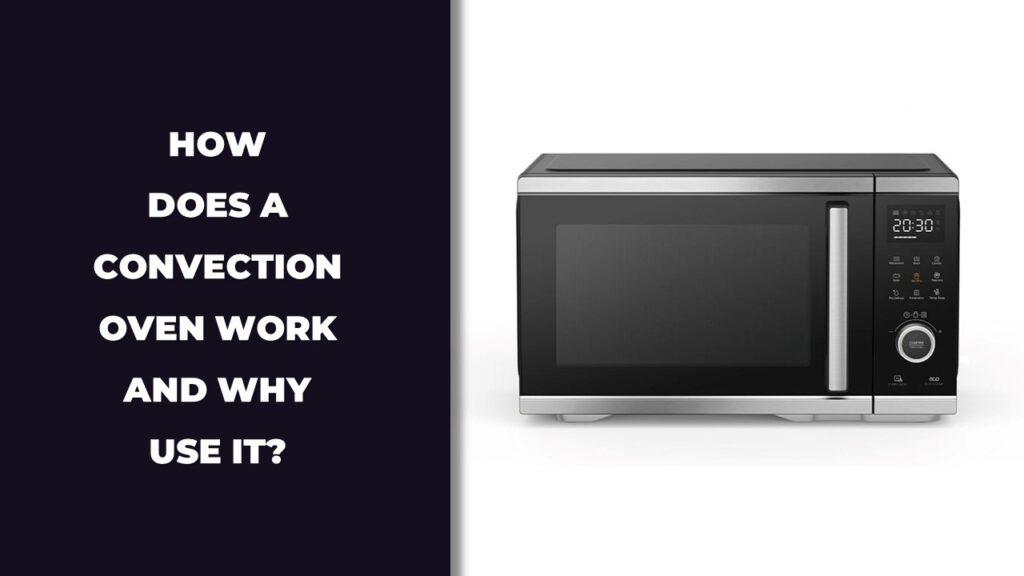
A convection oven works by using a built-in fan and exhaust system to blow hot air around the food, helping it cook faster, more evenly, and with better browning. The fan moves the heated air throughout the oven, so there are fewer hot or cold spots. The exhaust pulls out moisture, making the cooking environment drier and helping foods crisp up on the outside while staying juicy inside.
We’ll explain exactly how convection ovens work and why they’re different from regular ones. You’ll also learn when to use the convection setting, what foods work best, and a few simple tips to get better results every time.
What Is A Convection Oven?
A convection oven uses a built-in fan to blow hot air around the food, helping it cook faster, more evenly, and with better browning than a regular oven. This airflow gets rid of hot and cold spots, making it great for roasting, baking, and crisping.
Unlike standard ovens that rely on still air, convection ovens keep the heat moving. This means food cooks from all sides at once, with fewer burnt edges and less chance of being undercooked in the center.
They come in many styles, including built-in, freestanding, countertop, and even air fryer ovens. Some models use an extra heating element behind the fan, known as true convection, for more precise heat control.
How Does A Convection Oven Work?
A convection oven works by using a fan and exhaust system to blow hot air around the oven, helping food cook faster, more evenly, and with better texture. The moving air surrounds the food from all sides, breaking up cold spots and creating a dry environment that’s perfect for crisping and browning.
Here’s how the process works step by step:
- Heating Elements Warm the Air: The oven’s top, bottom, or rear heating elements generate the initial heat.
- Fan Circulates the Heat: A built-in fan pushes the hot air around the oven cavity, so the temperature stays even across all racks.
- Exhaust System Removes Moisture: As the air circulates, excess steam escapes, helping food brown and crisp instead of turning soggy.
- Heat Reaches Food Faster: The consistent airflow breaks through the cold air layer around the food, allowing it to cook faster and more evenly.
This setup works especially well for roasting meats, baking on multiple trays, and any meal where you want a golden outside and a tender inside.
Key Benefits Of Using A Convection Oven
A convection oven cooks food faster, more evenly, and with better browning by circulating hot air with a built-in fan and exhaust. This airflow keeps heat consistent and reduces moisture buildup, giving your food a crisp finish and shortening cooking time.
Here’s why convection ovens are worth using in your kitchen:
- Faster Cooking Times: Since hot air moves around the food, it cooks more quickly than in a regular oven, often shaving off 20 to 30 percent of the total time.
- Even Heat Distribution: No more rotating trays halfway through. The circulating air helps cook everything on each rack at the same pace, from edge to center.
- Better Browning and Crisping: The drier air inside helps moisture escape, which makes roasted vegetables, meats, and baked goods develop a golden, crispy surface.
- Improved Energy Efficiency: With lower temperatures and quicker cook times, convection ovens can use less energy than traditional ovens.
- Multiple Rack Cooking: The consistent air movement makes it possible to cook several dishes at once without uneven results or hot spots.
What Should You Cook In A Convection Oven?
A convection oven is great for roasting, baking, and toasting because it cooks food evenly with a crispy, golden finish. The moving air works best with foods that benefit from dry heat and quick browning.
Here are the best foods to cook using convection mode:
- Roasted Meats and Poultry: Whole chickens, turkey, and beef roasts cook faster and come out juicy with crisp skin.
- Vegetables: Roasting veggies like potatoes, carrots, and brussels sprouts is quicker and gives them a great caramelized texture.
- Cookies and Baked Goods: Bake multiple trays of cookies, biscuits, or scones evenly without needing to rotate pans.
- Casseroles and Gratins: The even heat helps casseroles bubble and brown nicely on top without overcooking the center.
- Pies and Puff Pastries: Flaky pie crusts and puff pastries benefit from quick, even heat that helps create a perfect lift and crunch.
- Toasting and Dehydrating: The dry air helps toast bread evenly and dehydrates fruits or herbs without trapping moisture.
Using a convection oven for these foods can save you time while giving better texture and flavor.
When Not To Use The Convection Setting
A convection setting is not ideal for delicate foods that start as wet batter or require gentle, even rising. The moving air can cause uneven shapes, cracked tops, or a dry finish in soft or fluffy dishes.
Here are the foods better suited for a regular oven:
- Custards and Flans: These rely on still, gentle heat. The airflow can cause the surface to ripple or crack.
- Soufflés: A convection fan can deflate these delicate dishes before they rise properly.
- Cakes and Quick Breads: The blowing air may set the outside too quickly, while the center stays undercooked or rises unevenly.
- Soft Yeast Breads: Some bakers prefer the steady heat of a conventional oven to avoid drying out the crust or disrupting the dough’s shape.
- Delicate Pastries: While puff pastry works well, some lighter baked goods can get pushed out of shape from the air movement.
If you’re unsure, go with the regular bake mode for anything light, fluffy, or wobbly in texture.
Convection Bake Vs. Convection Roast: What’s The Difference?
Convection bake and convection roast both use a fan to circulate hot air, but they differ in how the heat is applied. Convection bake uses lower, even heat—ideal for baked goods and dishes that need gentle cooking. Convection roast combines higher heat from the top and bottom to brown and crisp the outside of meats and vegetables while cooking them quickly inside.
Here’s a quick comparison:
| Feature | Convection Bake | Convection Roast |
| Heat Source | Mostly from the bottom heating element | From both top and bottom elements |
| Air Circulation | Gentle, steady airflow | Stronger airflow for quicker cooking |
| Temperature | Moderate and consistent | Higher, more intense |
| Best For | Cakes, cookies, pastries, casseroles | Meats, poultry, roasted vegetables |
| Cooking Result | Even rise and soft texture | Crispy, browned outside with juicy interior |
| Multiple Tray Use | Yes, great for baking on multiple racks | Not ideal, focus is on crisping and direct heat |
Tips For Cooking With A Convection Oven
Convection ovens cook more efficiently, but you may need to adjust traditional recipes. Lower the temperature, shorten the cooking time, and give space for air to circulate around your food.
Here are some helpful tips to get better results:
- Lower the Temperature: Reduce the recipe temperature by about 25°F. Many convection ovens do this automatically.
- Check Sooner: Since food cooks faster, check for doneness earlier—around two-thirds into the original cook time.
- Use Low-Sided Pans: This helps hot air flow over the top of the food, giving you crispier results.
- Avoid Covering Racks with Foil: Blocking airflow cancels out the benefits of convection.
- Don’t Overcrowd the Oven: Leave space between trays and dishes so the air can move freely.
Following these tips will help you take full advantage of the convection setting without overcooking or drying out your meals.
Is A Convection Oven Worth It For Home Cooking?
A convection oven is worth it if you want faster cooking, more even results, and better texture, especially when roasting or baking. It can cut down cook time and give food a crisp finish without drying it out.
For home cooks who often prepare large meals or use multiple trays at once, the consistent heat distribution makes a big difference. You’ll spend less time rotating pans or guessing which part of the oven cooks best. It’s also useful if you bake often, as it helps avoid underbaked centers and burned edges.
That said, if you mostly make delicate baked goods like sponge cakes or flans, you might still prefer a traditional bake setting. But for everyday meals, from roasting vegetables to batch baking cookies, a convection oven can be a real time-saver in your kitchen.
Convection Oven Vs Conventional Oven: Quick Comparison
A convection oven uses a fan and exhaust to move hot air around the food, while a conventional oven relies on natural heat rise. This makes convection ovens cook faster, more evenly, and with better browning—especially useful when roasting or baking on multiple racks.
Here’s a quick look at how the two compare:
| Feature | Convection Oven | Conventional Oven |
| Heat Circulation | Fan and exhaust system | Natural rise and fall |
| Cooking Time | Faster | Slower |
| Evenness of Cooking | More consistent | May have hot or cold spots |
| Browning/Crisping | Excellent | Can be uneven |
| Energy Efficiency | More efficient | Less efficient |
| Best For | Roasting, baking multiple trays | General baking and casseroles |
Final Thoughts
If you’re tired of uneven baking, long cook times, or soggy roasted veggies, a convection oven might be just what your kitchen needs. Its built-in fan and exhaust system help food cook faster, brown better, and come out more consistent every time.
For home cooks who bake in batches, roast often, or need a little help avoiding burnt edges and raw centers, the convection setting can save time and improve results. It works well across a wide range of recipes—from cookies to chicken to sheet pan dinners.
That said, it’s not always the right choice for delicate foods like flans or soft cakes. But for everyday cooking, especially when texture and time matter, switching to a convection oven is a smart and practical upgrade.
Related FAQs
Can You Use Aluminum Foil In A Convection Oven?
Yes, you can use aluminum foil in a convection oven, but avoid covering oven racks or blocking airflow. Always use it carefully to prevent uneven cooking or damage to the fan.
Do Convection Ovens Use More Electricity?
No, convection ovens typically use less electricity because they cook food faster and often at lower temperatures than conventional ovens.
Is A Convection Oven The Same As An Air Fryer?
They work the same way by circulating hot air, but an air fryer is a smaller, more intense version of a convection oven. Air fryers heat faster and are better for small, crispy batches.
How Do You Know If Your Oven Is Convection?
Check for a fan inside the oven or a “convection” setting on the control panel. If you see either, your oven has convection capabilities.
Can I Turn Off The Fan In A Convection Oven?
Some models let you switch between convection and regular modes. If yours has both settings, you can turn off the fan by using the standard bake function.

At our core, we’re a group of passionate households and gardening tools and appliances users and enthusiasts. We dive deep into the world of tech, especially when it’s about your household or gardening electric items. We try to provide as much value to the readers with our information and how to blog articles as possible. For affiliate articles our honest and transparent reviews of essential tech products are rooted in real-world experience. We take great satisfaction in offering unbiased evaluations, ensuring that you can make informed decisions when investing in your desired techs.

